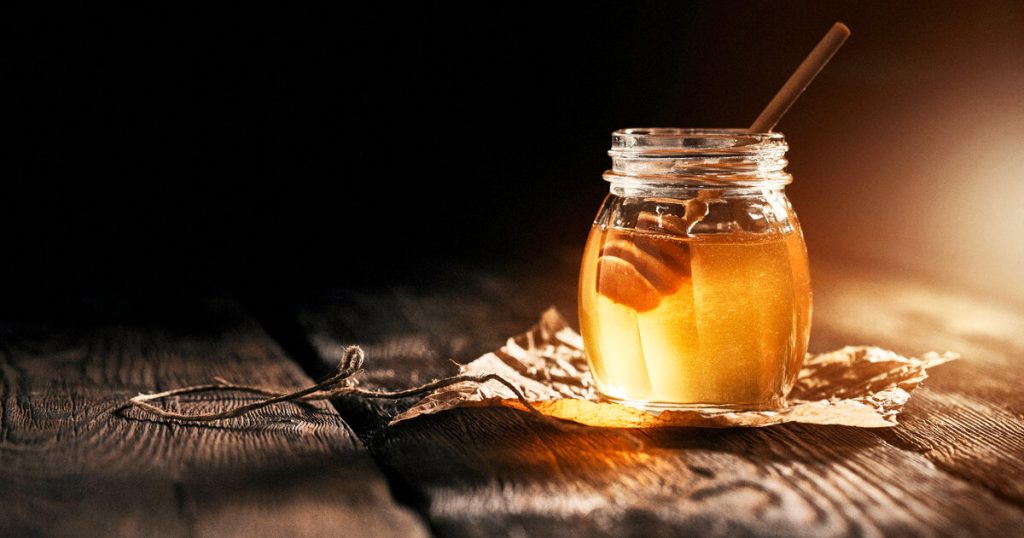
Honey for cuts and colds: how well does a natural product work?
“First you have bees, then bees have bees,” says Professor Carsten Munstead. Senior gynecologist at Ortenau Klinikum Offenburg-Kehl has been a beekeeper for over 40 years. “For me, there is nothing better than standing in front of an open beehive, seeing that the bees are doing well.”
From time to time, the doctor also deals with bees in his daily work. Of course, six-legged friends do not beat in the operating room, but their honey is used with some patients. It has now been proven that honey is effective in treating wounds
Honey in the treatment of wounds
Gynecologist Munstead still remembers the first time honey was used as a therapeutic agent in another clinic. At the time, he was treating a patient who had advanced breast cancer. The patient had a wound tumor that gave off an unpleasant odor. Although the wound is rinsed daily with various solutions, the smell remains. Heavy burden on the patient.
“At the time, I had just read a study on honey in wound care and suggested trying it,” Münstedt says. At first, some colleagues smiled at the idea, but only two days later it had an effect: “The honey absorbed the wound fluid. The bacteria that produced the stench were gone.” The patient could not beat the cancer, but her quality of life improved and she was able to see her relatives again.
Sugar and bacteria attack acid
In the meantime, honey has become well-established in treating wounds and its antibacterial effect has been proven. Various mechanisms play a role in this. “Honey is 80 percent sugar. It removes water from the wound and the bacteria in it. It dries up and dies,” the expert explains. The same principle is used for jam. “You dump so much sugar on the fruit that the bacteria can’t stand it. That’s why the jam doesn’t spoil.”
Chemically, honey is an acid. Bacteria do not grow in this acidic environment.
Dr. says. Birgit Lichtenberg-Krague, Head of the Department of Honey Analysis at the State Institute of Beekeeping Hohen Neuendorf near Berlin. “Chemically, honey is an acid,” the expert explains. You do not notice this due to its high sugar content. However, its pH ranges between 3.5 and 4.5. Bacteria will not grow in this acidic environment.
In addition, certain types of honey contain a large amount of the enzyme glucose oxidase. Combined with wound fluid, it converts glucose – one of the main sugars in honey – into gluconic acid. “In this process, hydrogen peroxide is released, which acts as a disinfectant,” explains Lichtenberg-Kraag.
About 200 substances in honey
The fact that honey fights bacteria applies to all types. However, only medicinal honey can be used to treat wounds: specially prepared Manuka honey from New Zealand. Compared to other types of honey, it contains another component: methylglyoxal. “It supports the antibacterial effect,” explains Lichtenberg-Kraag.
In addition, honey offers another advantage in the treatment of wounds: it ensures that the wound heals more gently and that large scars do not form. “The acid in honey stops certain enzymatic activities of the bacteria, so the tissues die less.”
In total, honey contains about 200 different substances. These include secondary plant substances such as flavonoids, which promote healing and have an anti-inflammatory effect. The composition in which the substances occur varies from honey to honey. “Therefore, the bacteria have not yet developed any resistance, that is, resistance to honey,” the expert explains. Big advantage over antibiotics.
Honey for coughs and colds
Therefore, honey is an effective remedy in treating wounds. But what about the common cold? Milk with honey, for example, is a home remedy for a sore throat. “There are hardly any meaningful studies on this topic,” says Dr. Munstedt.
Honey is applied as a film to the mucous membranes of the throat and has an anti-inflammatory effect there.
On the other hand, when it comes to honey alone, the case study is better – at least for children. “A meta-study showed that children with a cold coughed less and slept better if they took a spoonful of honey in the evening,” Münstedt says. Honey is applied as a film to the mucous membranes of the throat and has an anti-inflammatory effect there. However, if honey is taken with bread or diluted in tea, this effect is lost.
Since honey is mainly made up of sugar, it should only be eaten in small amounts. Otherwise, the risk of obesity and the diseases that arise from it increases. For children under the age of one year, honey is completely taboo. Although it cannot contain bacteria, it can contain germs from them. Since the immune system of children is still immature, germs can germinate and substances produced by bacteria can cause severe poisoning.
Beware of exaggerating the promises of salvation
Münstedt warns against exaggerated promises of salvation – in 2020, for example, the specialist journal BMJ Evidence-Based Medicine published a review by researchers from Oxford University. Accordingly, honey works better than medicines used to treat upper respiratory infections. This news was covered by many media outlets, but the study was torn in the professional world by distortions, incorrect calculations and comparisons. “This study is completely questionable,” says Dr. Münstedt.
Lichtenberg-Kraag is generally reserved in regards to the effects of honey: “It is possible that its many components may also have a positive effect on a cold.” For example, lemon honey contains essential oils. However, the effect of honey is only proven in the treatment of wounds.
Allergy risk to honey mixtures
For example, beekeepers are not allowed to advertise the health-promoting effect of their product. The expert explains: “Honey is a food, not a medicine.” However, some adventurous things are written on the labels. You should also be careful with your self-mixed honey creations. It is sometimes mixed with other bee products such as propolis. Many people will have an allergic reaction to this, according to Lichtenberg-Kraag.
On the other hand, allergies to pure honey are very rare: “The pollen content of honey is only 0.02 to 0.05 percent of the ingredients.” So those who suffer from hay fever have nothing to fear.

“Coffee trailblazer. Social media ninja. Unapologetic web guru. Friendly music fan. Alcohol fanatic.”








